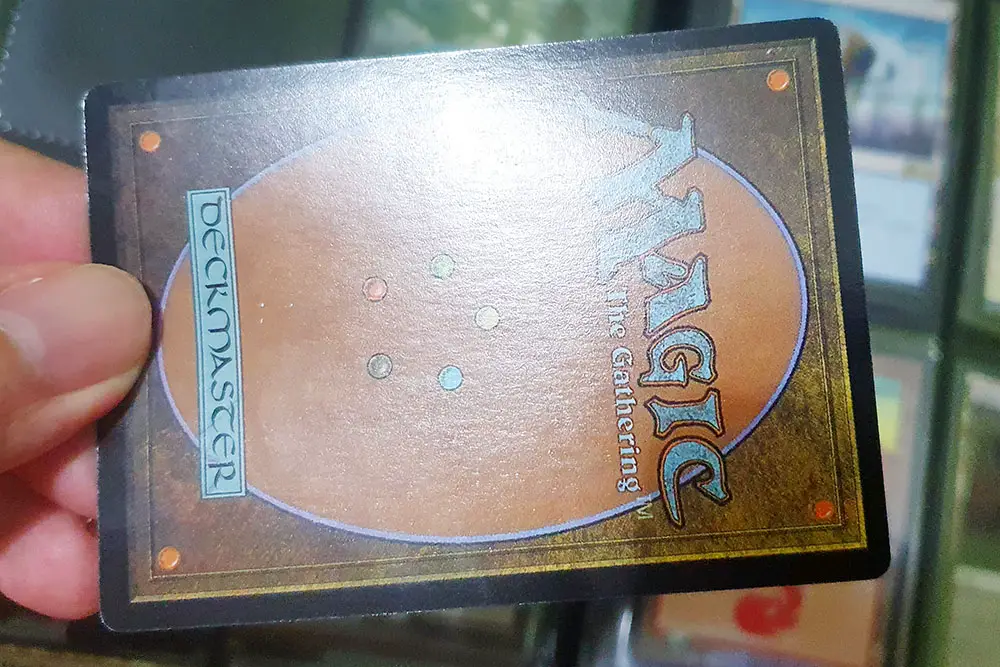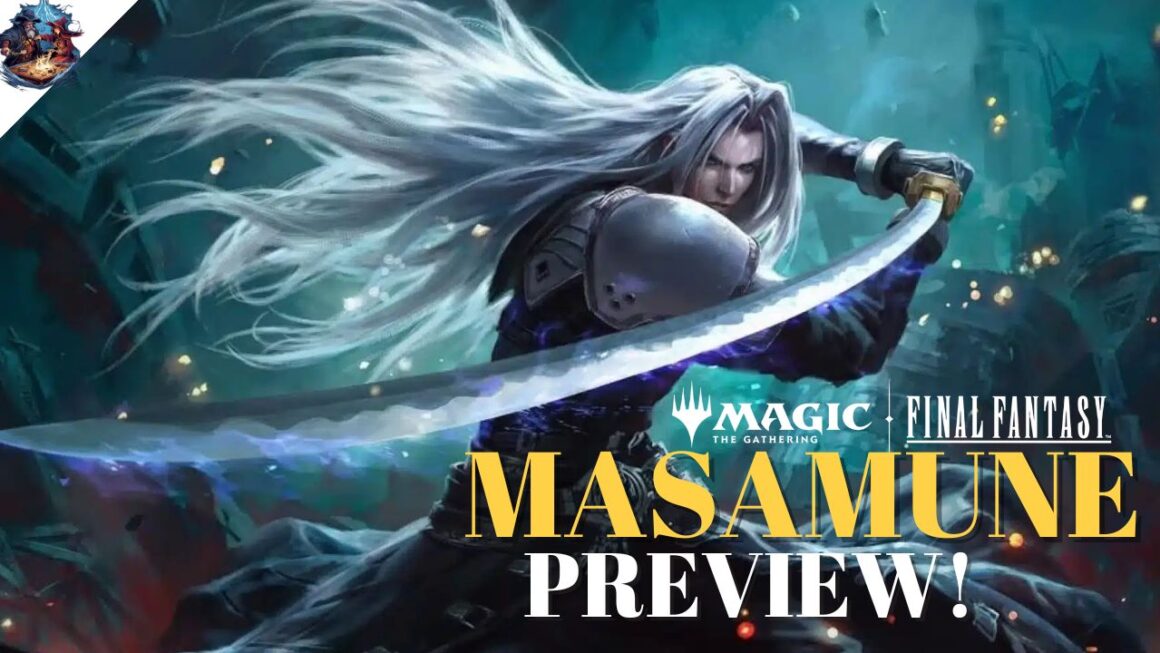*Updated Oct 2020
It’s 2020, and while there are no flying cars yet, we have fake news, fake Hermes bags, and even fake MTG cards. The printing process is so advanced today that a fake card can pass off easily as a real one.
Beginners really need to understand how to spot a fake card, as eventually you’ll be introduced to the world of buying and selling singles. You don’t want to be paying $30 for a Standard format powerhouse like Ugin, the Spirit Dragon and realise down the road that it was a fake card ‘valued’ at $1-2.
There are scientific methods, and non-scientific ones, to help the basic MTG player differentiate a real card from the fakes. Let’s compare a real Flooded Strand from Onslaught (2002) and its fake card:
Touch and Feel for Older Cards
When inspecting a card, while this may sound obvious, you have to take the card out of the sleeve and hold it in your hand. In sleeves and at a distance, fake cards can look very real. While the feel of modern new and fake cards are very similar (smooth and polished), an old, real card is supposed to be rougher to the touch. We can’t demonstrate the sensation of touch here, so it would be best if a Local Game Store or friend with a verified real copy could let you compare it.
Additionally, the fake cards I had acquired in 2019 (from Aliexpress.com) and used for this comparison are also noticeably thicker than the real card. Just by clamping down my fingers on each version of this Flooded Strand, I could quickly determine the thicker card was the fake one.
The problem here is that new, beginner players have not played enough to know the difference.
Hologram Quality for Newer Cards
Wizards of the Coast introduced the hologram at the base of Rare or higher cards in set M2015, to create an additional layer of protection against counterfeiters. It’s just like how regular currency notes have special holographic features or print marks to make it hard to reproduce.
But in 2018, holograms started appearing on the fake card as well. So far there are two versions I’ve come across:
The first is an actual hologram with reflective attributes much like the real one. However those counterfeit holograms were printed on as an additional layer on top of the card. It doesn’t ‘fall off’ on its own, but fake holograms could be scraped off with a tool, whereas holograms on real cards are flush with the rest of the cardboard.
The second version doesn’t have an actual hologram but has just a scanned print from a real card. Thus the ‘hologram’ is flush with the rest of the card but it lacks any reflective attributes. This is a dead giveaway for a fake card.
October 2020 Update:
The newest batch of fake cards has made massive improvements in the hologram. These new holograms are virtually flush with the rest of the card, and a simple glide-through with your fingers can fool at least 90% of players. And these have amazing reflective qualities as well – pretty much indistinguishable from real cards.

Above is a 8x zoom into the hologram of a real MTG card. The printing is crisp and detailed. This is a clear difference from the latest holograms on a fake card (see below):

The fake card’s hologram printing isn’t as crisp, and is filled with strange artefact patterns throughout the entire hologram. If you observe a little further, you’ll also notice that the sub-sections within the hologram also have different proportions.
But here’s the killer: each of these photos were shot under a specialised loupe. To the naked eye, these new holograms on fake cards look every much as authentic as the real ones. I was thoroughly impressed, and scared at the same time. This felt like a professional con job one would see in famous paintings.
A Fake Card Has A Terrible Back

This would be very obvious to a more experienced player – the back of a fake card is murky and the colour tonality is off as well, with a slight greenish tint. It’s ironic that that counterfeiters can reproduce the front of a MTG card so well but the back is a clear giveaway. In future though, should fake cards have a near-perfect back, this will become a problem even for old players.
October 2020 Update:
Looking at the latest printings of fake cards, it’s clear the card backs have been greatly improved. They now have the right brightness, saturation and contrast as real cards. It is mind-blowing good.

The only giveaway left is that it has a significantly glossier back than a real card, even more so than a real card with Japanese printing (they are known to be glossier than US-printed cards).
My main concern is that may players do not pay attention to the backs when purchasing sub-$50 priced cards. Some would analyse the black borders for any scruff marks or peels, but the extra gloss could be missed.
This problem is further compounded when any card is put into a sleeve. A clear sleeve is naturally glossy, and players who do not take the card out will definitely mistake the glossy backs as a sleeve’s reflection.
Shine A Light To See The Truth

One simple way to spot a fake card is to just shine strong light on it using a torch. Real cards allow some light to pass through, while the counterfeit is either too thick or made with different card stock to see any glimpse of light. Do note that you should use a significantly strong torch light, otherwise you will not see anything in both cards and the test will be useless.
Using A Loupe To See Print Matrix
The most scientific method available, and perhaps the most inaccessible, simply because you’d need vast experience in the printing industry or analysing old cards to differentiate from the fakes. As this was tested on an old card – Flooded Strand from Onslaught – the printing technology is obviously more dated and the differences more substantial.
We used regular Samsung S10 phone camera through an 8x loupe to get these scans. Ideally you should use a 10x loupe or better but thanks to the high resolution of the photos, we were able to crop in.
The print matrices look very similar between the fake and real card. But one major difference is that the word “Flooded” on the fake card is actually printed above the background design. This is not the case in the real card, where you can see dots from the colour spectrum eating into some of the lettering.

Another observation is that the fake cards have more vibrant colour in their printing process, possibly because the technology today is simply too good and cannot replicate the old processes of an old card like Flooded Strand from Onslaught. If you didn’t have the real card as a comparison, would you have been able to identify the fake card in the photo above?
End Step: Should You Get Fake Cards as Proxies?
There is plenty of variance in fake cards as well, and multiple printers (mostly in China) will all produce cards of different quality. What we’ve shown here is just one sample, and it’s over a year old. Technology is always getting better and you can be sure there’ll be high-quality holograms and Foils in the future.
The latest batch of fake cards produced in late 2020 has made vast strides in the quality of the card backs and holograms. They are so good that I believe these will infiltrate many small and bulk transactions, where buyers purchase online or do not carefully check the authenticity of each card.
Fake cards are mainly a problem for those who intent to cheat and sell. But as a poor player who just wants to enjoy the game with specific expensive cards, it’s widely accepted to use fake cards as proxies in casual play. Just don’t use them for tournament play as you could booted out and get banned from future events.
For a more non-technical analysis on fake cards affecting the game, I recommend reading this article. If anyone has updated information on the latest fake cards, or would like to add more to the conversation, please leave a comment below or e-mail us tapandsac@gmail.com.






